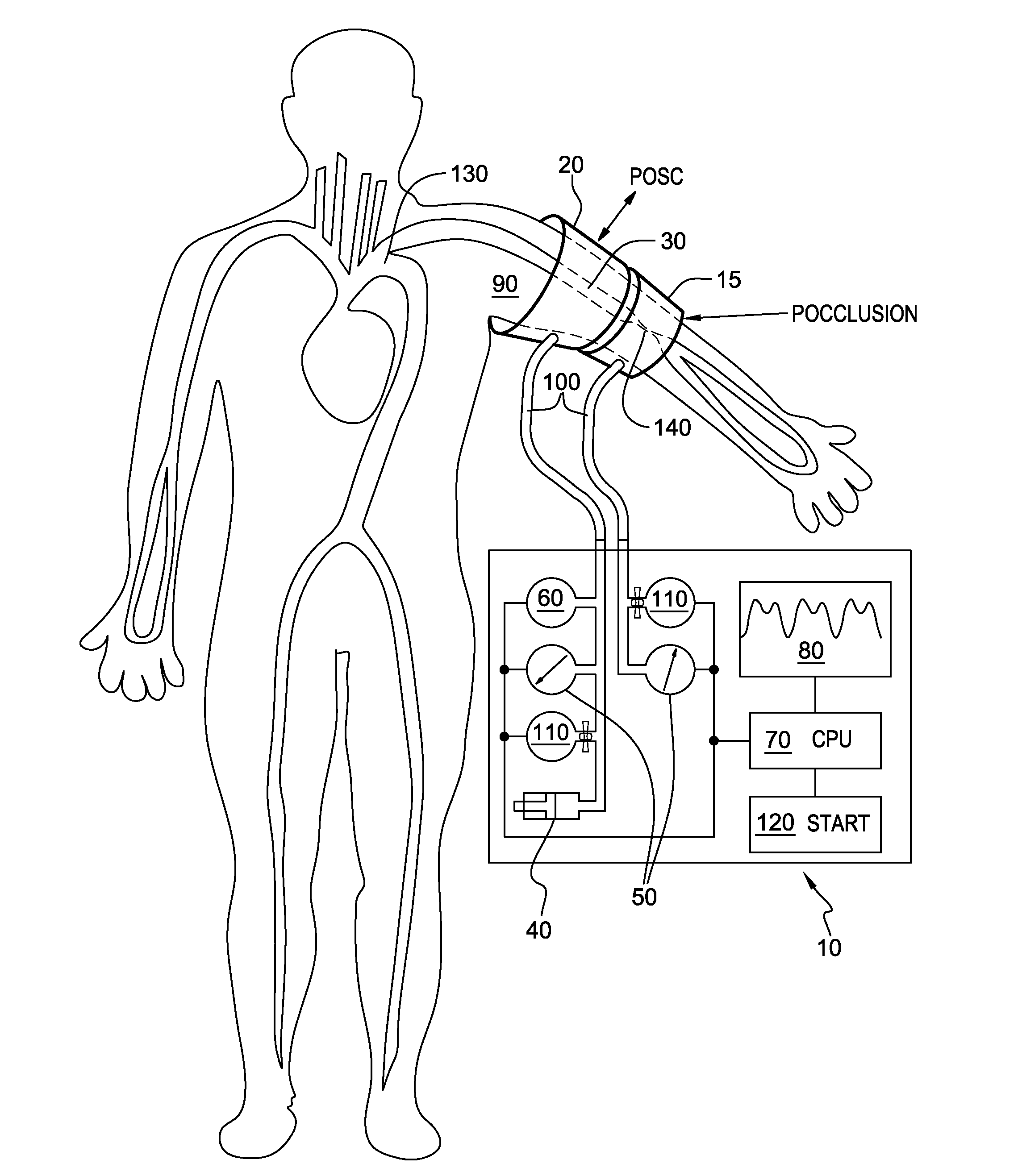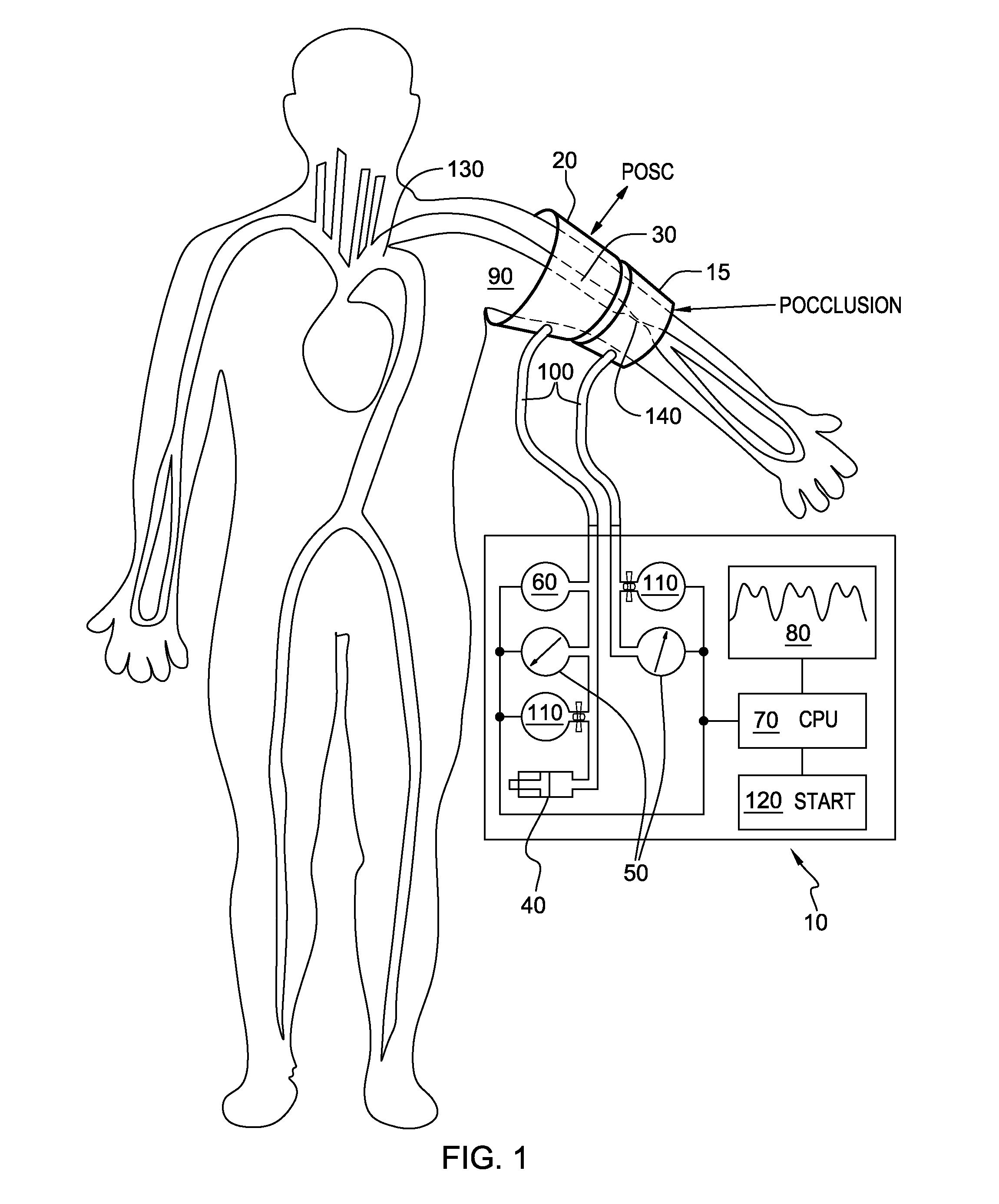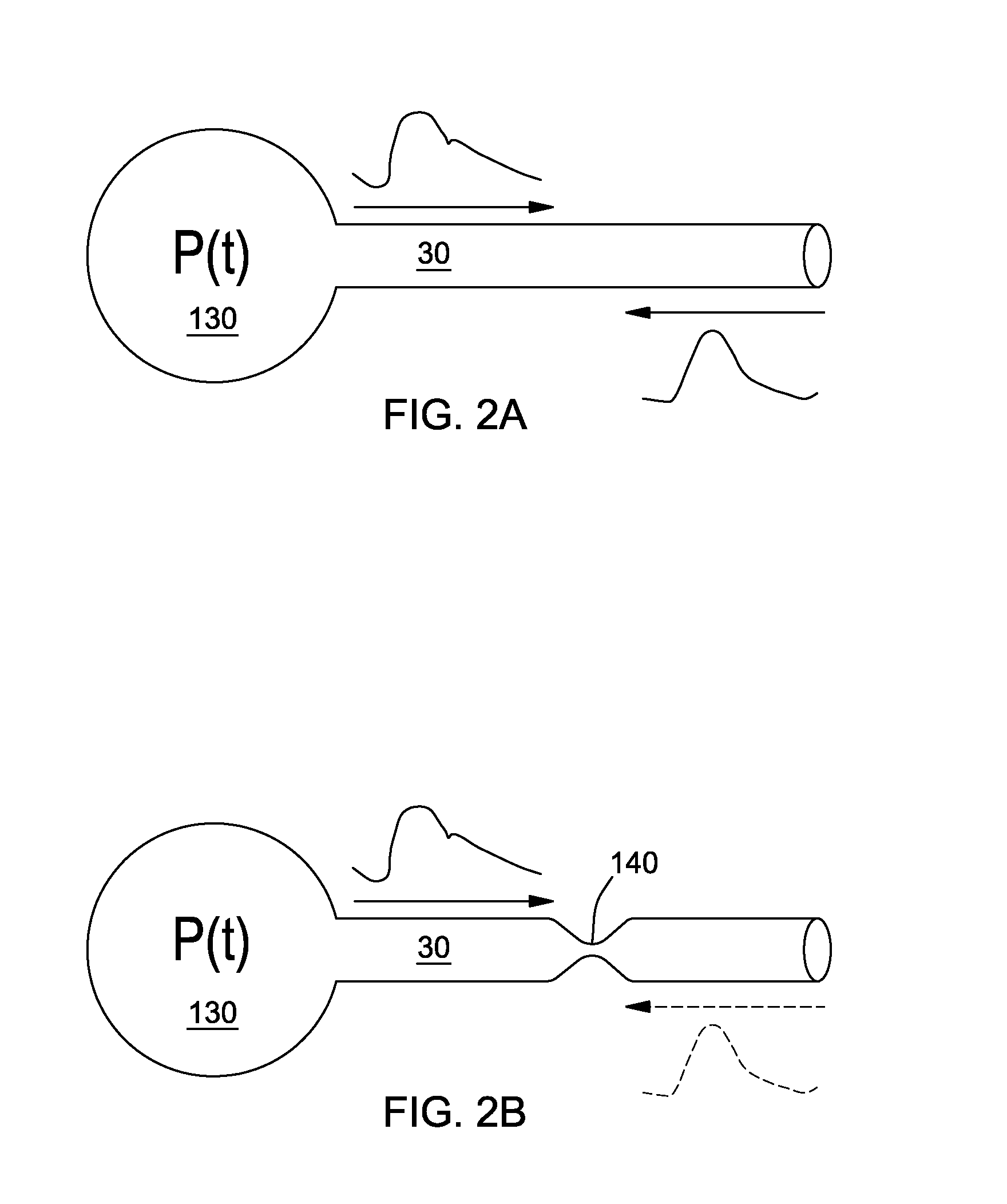Noninvasive method and apparatus to measure central blood pressure using extrinsic perturbation
a technology of extrinsic perturbation and non-invasive method, which is applied in the field of non-invasive method and apparatus to measure central blood pressure using extrinsic perturbation, can solve the problems of no universally accepted method to measure central blood pressure non-invasively, no way to predict the cases, and degenerative changes in wear and tear, etc., to achieve the effect of eliminating venous stasis artifacts
- Summary
- Abstract
- Description
- Claims
- Application Information
AI Technical Summary
Benefits of technology
Problems solved by technology
Method used
Image
Examples
Embodiment Construction
[0058]The following is a detailed description of example embodiments of the invention depicted in the accompanying drawings. The example embodiments are presented in such detail as to clearly communicate the invention and are designed to make such embodiments obvious to a person of ordinary skill in the art. However, the amount of detail offered is not intended to limit the anticipated variations of embodiments; on the contrary, the intention is to cover all modifications, equivalents, and alternatives falling within the spirit and scope of the present invention, as defined by the appended claims.
[0059]In an embodiment, the invention provides a method to obtain continuous recording of the central arterial blood pressure waveform noninvasively utilizes dual (distal occlusion and proximal) brachial artery occlusion cuffs and dual external oscillation. The distal arterial occlusion cuff eliminates venous stasis artifact and flow related gradient from aorta to the brachial artery. The p...
PUM
 Login to View More
Login to View More Abstract
Description
Claims
Application Information
 Login to View More
Login to View More - R&D
- Intellectual Property
- Life Sciences
- Materials
- Tech Scout
- Unparalleled Data Quality
- Higher Quality Content
- 60% Fewer Hallucinations
Browse by: Latest US Patents, China's latest patents, Technical Efficacy Thesaurus, Application Domain, Technology Topic, Popular Technical Reports.
© 2025 PatSnap. All rights reserved.Legal|Privacy policy|Modern Slavery Act Transparency Statement|Sitemap|About US| Contact US: help@patsnap.com



